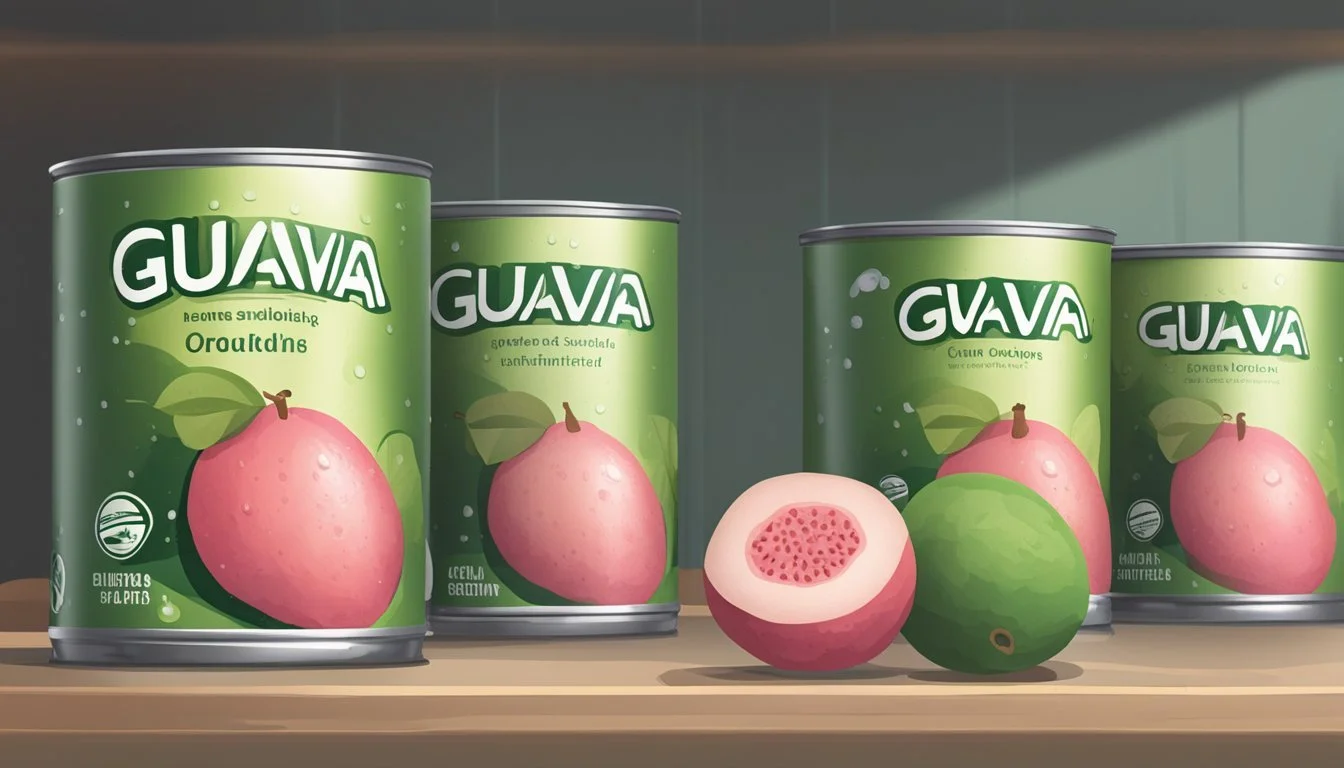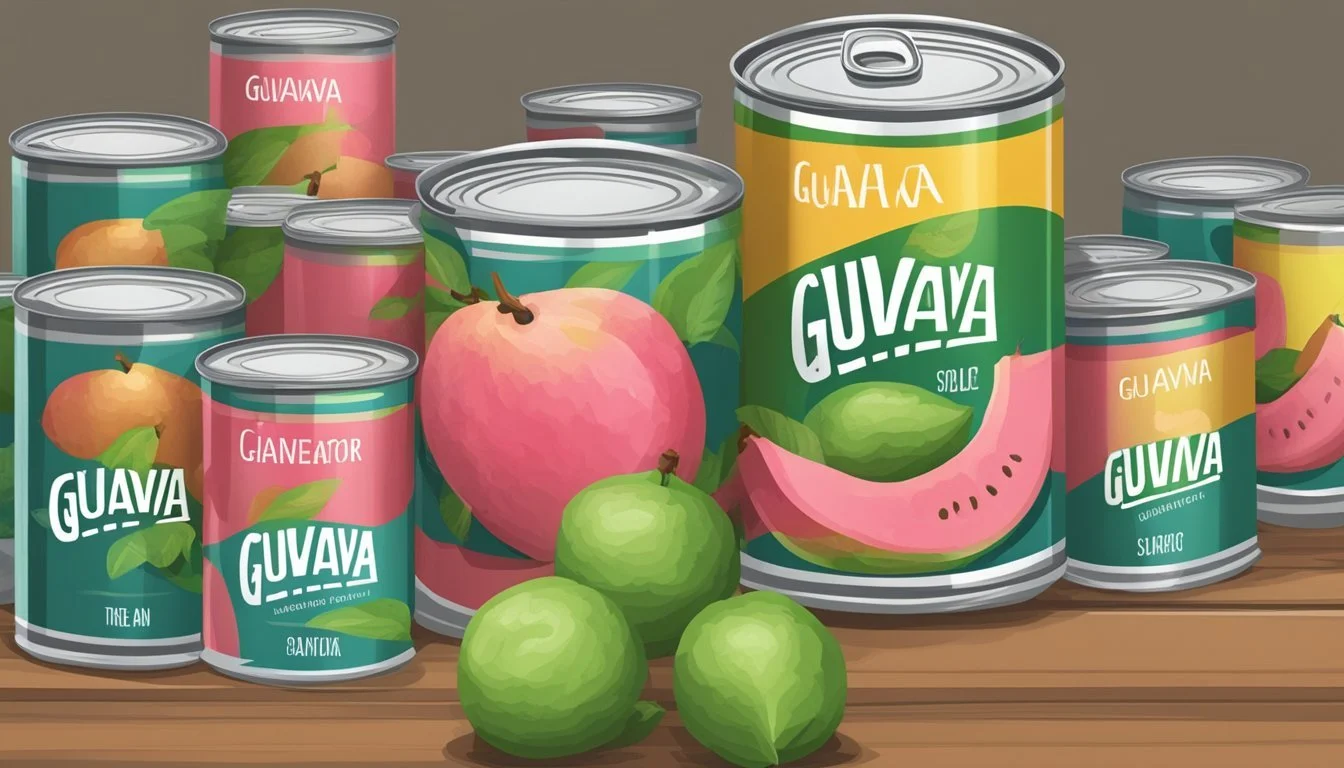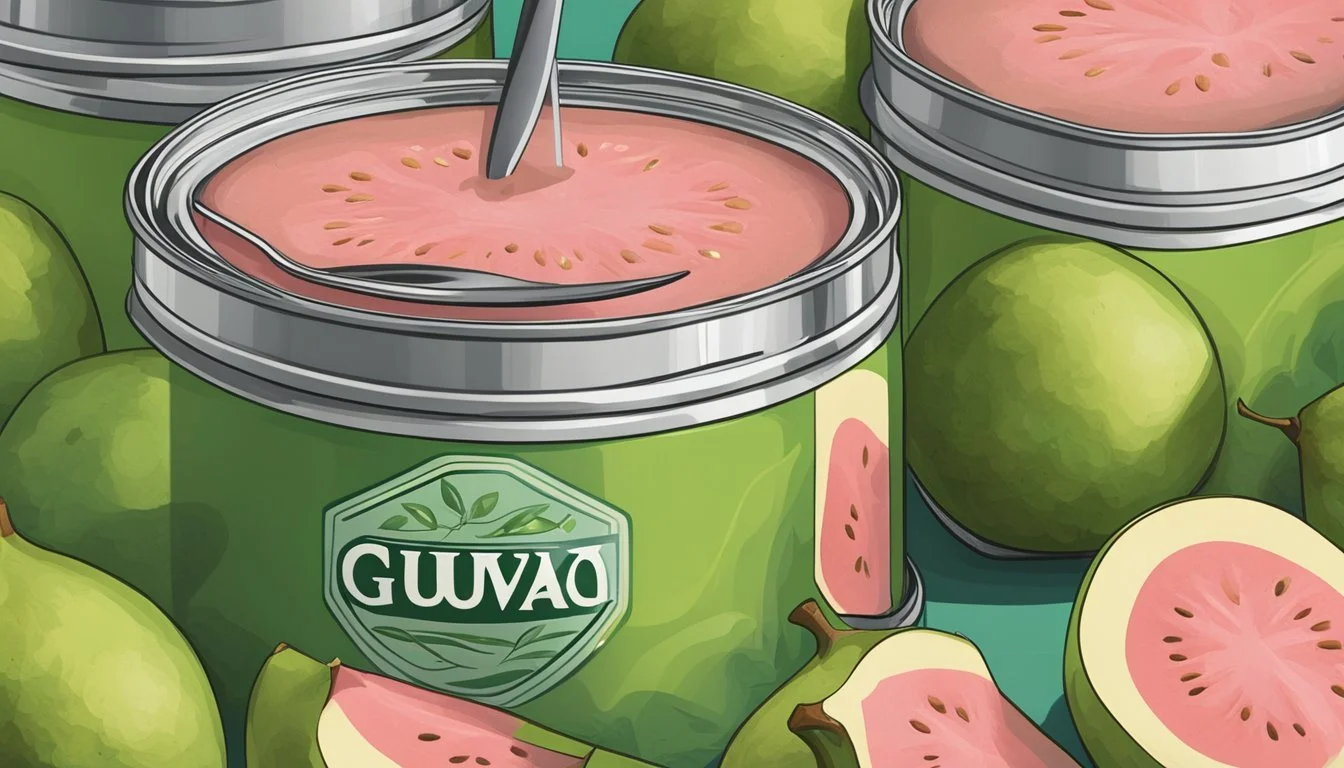Does Canned Guava Go Bad?
Shelf Life and Storage Tips
Canned guava, a popular tropical fruit, offers the convenience of year-round availability. Shelf life is a key consideration for anyone looking to enjoy this sweet, flavorful product without worry. Unopened canned guava can last for several years when stored properly in a cool, dry place. Factors such as exposure to extreme temperatures or high humidity can impact its longevity.
Once opened, canned guava should be consumed within a few days to ensure optimal taste and safety. Storing opened guava in an airtight container in the refrigerator can help extend its freshness. Freezing is another option, where leaving some headspace can prevent expansion issues and maintain the quality of the fruit.
Understanding how to maximize the shelf life of canned guava will help in making the most of this versatile fruit. From dessert recipes to jams and toppings, knowing how to store it properly will ensure that you can enjoy the delicate flavors of guava without compromising on safety or quality.
The Basics of Canned Guava
Canned guava, a convenient form of this tropical fruit, offers a unique blend of sweetness and nutritional benefits. Understanding different aspects such as its definition, nutritional profile, and the types available can enhance its usage.
Defining Canned Guava
Canned guava refers to guava that has been processed and preserved in cans. The process involves peeling and sometimes chopping the fruit before placing it in syrup, juice, or water. This method extends the shelf life of guava, making it accessible year-round.
Ingredients typically include guava, water, sugar, and sometimes preservatives or flavor enhancers. The result is a product that retains much of the fruit’s freshness and sweetness while offering convenience.
Nutritional Profile
Canned guava is rich in essential nutrients. It is a great source of vitamin C, which supports the immune system, and fiber, aiding digestion. The fruit also contains significant amounts of potassium, which is important for heart health and regulating blood pressure.
A serving of canned guava provides antioxidants that help combat oxidative stress. While canned guava may have added sugar for preservation and taste, it maintains a high nutritional value, providing several vitamins and minerals.
Types and Varieties
There are various types of canned guava available. These can include whole guavas, guava halves, or guava paste. Each type offers different uses; whole or halved guavas are great for desserts, while guava paste is often utilized in baking and cooking.
The ingredients and the form of preserved guava might vary. Some products emphasize natural ingredients, avoiding additional sugars or preservatives. Others may include flavors or additional fruits to enhance the taste. Adaptation to different recipes is possible due to these variations, making canned guava a versatile option.
Shelf Life and Storage Recommendations
Canned guava can have a considerable shelf life when stored correctly, both in unopened and opened conditions. Proper storage conditions play a crucial role in maintaining its quality and safety.
Unopened Cans
When stored in optimal conditions, unopened canned guava typically has a shelf life of 1 to 2 years.
It's essential to keep these cans in a cool, dark, and dry place. Temperature fluctuations, direct sunlight, or exposure to humidity can accelerate the degradation process.
Storing the cans at room temperature away from stoves or other heat sources is recommended. If the can is dented, bulging, or rusting, it might be unsafe to consume, despite being unopened.
After Opening
Once opened, canned guava should be transferred to an air-tight container and kept in the refrigerator. This helps in maintaining freshness and preventing contamination.
Generally, opened canned guava remains in good condition for up to 1 month when refrigerated. Always use clean utensils when scooping out the guava to avoid introducing bacteria.
If any signs of spoilage, such as mold or off-odor, appear, it should not be consumed.
Optimal Storage Conditions
Storage conditions significantly impact the shelf life of both unopened and opened canned guava. For extended preservation of unopened cans, maintain a stable, cool environment, ideally between 50-70°F (10-21°C).
Avoid placing cans near sources of heat or in damp areas, as this can deteriorate the quality.
For opened guava, an air-tight container in the refrigerator at temperatures below 40°F (4°C) is vital to retain quality. Do not freeze canned guava directly in its can; instead, transfer it to a suitable freezer-safe container if freezing is necessary.
Identifying Spoilage
Canned guava, like other canned foods, can go bad due to age, improper storage, or compromised can integrity. Look for visual signs, changes in smell and texture, and the condition of the can itself.
Visual Signs
When inspecting canned guava, start by checking the appearance of the fruit and the liquid inside the can. Cloudy liquid or any discoloration are primary indicators of spoilage. Look for any signs of mold on the guava or inside the can. Mold can appear in various colors and signifies that the guava is no longer safe to eat.
Additionally, the presence of bubbles or foam in the liquid could suggest fermentation, indicating the fruit has spoiled. Always discard cans showing these visual signs.
Smell and Texture
Unpleasant odors are a strong indicator of spoilage. Fresh canned guava typically has a sweet, tropical aroma. If the guava emits an off odor, sour smell, or any unpleasant scent, it’s likely spoiled.
Check the texture of the guava as well. Fresh canned guava should be firm to the touch. If the texture is mushy or significantly altered, it may be a sign that the fruit has deteriorated. In combination, these sensory checks help confirm if the canned guava has gone bad.
Can Integrity
The condition of the can is crucial for determining the safety of its contents. Inspect the can for any dents, particularly those that are near the seams. Severely dented cans can compromise the seal, leading to contamination.
Additionally, look for rusting, which can indicate the can has been stored improperly or for too long. Leaking or bulging cans are serious signs of spoilage. These conditions suggest that bacteria may be present inside, making the contents unsafe to consume.
By checking for these indicators, you can ensure that your canned guava is safe to eat and enjoy.
Safety and Consumption
Proper storage and handling are crucial to ensure canned guava remains safe to eat. Understanding when it is safe to consume and when to discard can prevent potential health risks.
Eating Safely
Canned guava should be stored in a cool, dry place, ideally between 50°F and 70°F (10°C to 21°C). Avoid exposing the cans to direct sunlight or areas with high humidity, as this can compromise the product’s quality. Upon opening, transfer any unused guava paste to an airtight container to retain its freshness.
Signs of spoilage include off smells, strange textures, or discoloration. If the guava paste smells sour or has changed in color from its usual sweet, fruity, ripe appearance, it should not be consumed. Always use clean spoons and utensils to prevent bacteria growth.
When to Discard
Inspect unopened cans regularly for signs of damage. Leaking cans, rust, or bulging cans should be discarded immediately, as these may indicate bacterial contamination. Even with proper storage, canned guava can eventually spoil if kept beyond the expiration date, especially if improperly stored.
Once opened, canned guava paste, when stored in the refrigerator, can last a few weeks. If there are any signs of spoilage such as unusual colors or odors, discard it without tasting. It is essential to prioritize safety over waste reduction by erring on the side of caution with expired or suspect canned goods.
Best Practices for Preserving Quality
To maintain the best quality of canned guava, it's essential to employ effective storage techniques. This involves proper freezing, thawing, and contamination prevention methods.
Freezing and Thawing
Freezing canned guava can significantly extend its shelf life while maintaining quality. Transfer the guava paste or pieces into an airtight container or freezer bag to reduce exposure to air and moisture.
Leave some headspace in the container, about ½ inch, to allow for expansion during freezing.
Store the container in the freezer at a constant 0°F (-18°C). When ready to use, it's best to thaw the guava gradually in the refrigerator, rather than using a microwave or cold water, to preserve its texture and flavor.
Avoiding Contamination
Preventing contamination is crucial for maintaining the quality of canned guava. Always use clean utensils when handling the fruit to avoid introducing bacteria.
Store opened canned guava in an airtight container to keep out moisture and humidity. Keep it in a cool, dry place away from direct sunlight if not refrigerating.
Refrigerated guava should be consumed within 7 days to ensure quality and safety. By following these practices, you can enjoy canned guava at its best for a more extended period.
Utilization of Canned Guava
Canned guava can elevate various dishes with its unique tropical flavor. Its versatility allows it to be used in both savory and sweet recipes, making it a valuable ingredient in any kitchen.
Cooking and Baking
Canned guava is excellent for adding a fruity twist to cooking and baking. Its sweetness and acidity enhance sauces for meats and marinades. Chefs often incorporate it into stews, particularly those with pork or chicken, where the guava complements hearty flavors.
In baking, canned guava shines in desserts. It can be pureed and used as a filling for pastries. When mixed with simple syrup, it creates a delicious glaze for cakes and sweet breads. The guava syrup can also be used to enhance bean dishes and soups by adding depth and complexity.
Creative Uses
Beyond traditional recipes, canned guava offers diverse creative applications. Its syrup can be transformed into juices or fruity dressings for salads. For a unique spread, blend canned guava with butter to produce a tropical-flavored fruit butter.
Canned guava can also be used in drinks. Combine it with water and sugar to make refreshing guava beverages, or mix it into cocktails for a tropical twist. Another innovative use is in homemade ice creams and sorbets, where its rich flavor profile can stand alone or complement other fruits.
Maintaining Freshness After Opening
To ensure canned guava retains its peak quality after opening, proper storage techniques are crucial. The key points include efficient refrigeration and using appropriate containers to maximize freshness and avoid spoilage.
Refrigeration Tips
After opening, refrigerate canned guava immediately. Store it in the coldest part of the refrigerator, often the crisper drawer.
It's important to keep the temperature consistent to avoid compromising the fruit's freshness. The optimal temperature for storing canned fruits is typically around 35-40°F (1.7-4.4°C).
Keeping the guava in its juice or syrup can also help maintain its flavor and texture. Using a glass or plastic airtight container with a well-fitting lid can prevent exposure to air and reduce the risk of contamination.
Container Options
Proper container selection is essential for maintaining freshness. Airtight containers are highly recommended as they prevent the entry of air and moisture.
Glass jars and plastic containers with airtight seals are ideal choices. Avoid using metal containers, as they can impact the taste and lifespan of the guava.
Transferring the guava to smaller containers if the original can is not resealable can also help. For added protection, cover the surface of the guava with plastic wrap before sealing the lid.








